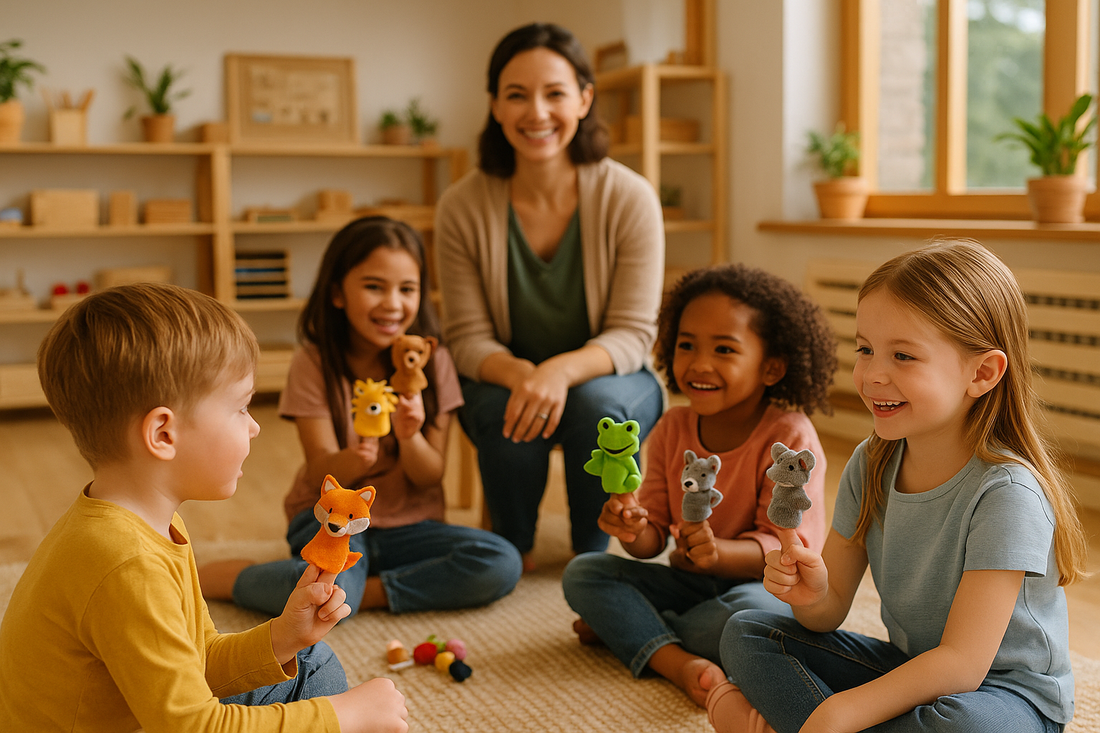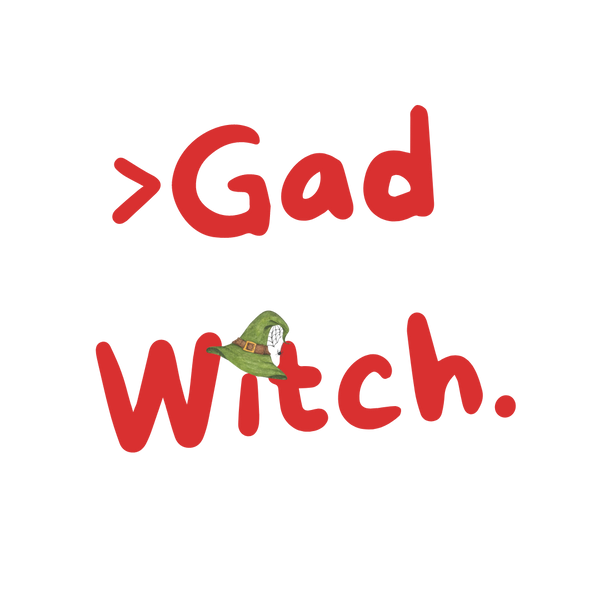
How Puppets Bring Learning to Life: Storytelling, Creativity, and Emotional Growth in Children
Mauro VendemiattiShare
When a child slips a small puppet onto their finger, something magical happens—imagination awakens. A simple toy becomes a character, a voice, and a story waiting to unfold. Puppets are far more than playful accessories; they are educational tools that nurture creativity, empathy, and communication. At GadWitch Toys, we believe that storytelling and role play help children understand the world—one story at a time.
This guide explores how puppets—from Finger Puppets to full Puppet Show Sets—transform playtime into a stage for learning and connection. You’ll find practical ideas for home and classroom, plus curated links to our Pretend Play Collection to spark imaginative learning.
Why Puppets Are More Than Just Toys
Puppets are timeless tools of storytelling, communication, and emotional expression. Whether it’s a hand puppet roaring like a lion or a tiny mouse finger puppet whispering secrets, these friendly companions give children a safe way to explore feelings, experiment with language, and express creativity.
Through puppet play, children connect ideas, emotions, and imagination. It’s an early form of theater—where the child is both actor and director. The process naturally builds confidence, empathy, and verbal skills while keeping learning joyful and engaging.
“Puppets transform playtime into a stage for imagination, empathy, and emotional learning.”
The Educational Power of Puppet Play
1) Enhancing Language and Communication
When children give their puppets voices, they practice pronunciation, vocabulary, and storytelling structure. Even shy children often open up while speaking through a puppet, using it as a “safe voice.” This improves social confidence and fluency. Parents and educators can read stories aloud with puppets or invite children to retell favorite tales—an excellent literacy exercise that boosts comprehension and sequencing.
2) Encouraging Emotional Intelligence
Puppets act as emotional mirrors. If the puppet feels “sad,” children can offer comfort; if it feels “angry,” they can practice problem-solving. By projecting feelings onto characters, kids learn to identify emotions, consider different perspectives, and develop empathy.
3) Boosting Creativity and Critical Thinking
Every puppet session invites creativity: children build characters, settings, and plots. They also practice logical sequencing, cause-and-effect, and perspective-taking—core skills for reasoning and narrative competence.
Types of Puppets and How to Use Them
| Puppet Type | Description | Best For | Example Activity |
|---|---|---|---|
| Finger Puppets | Small, soft, easy to move; perfect for little hands. | Toddlers & preschoolers | Tell animal stories with Little Puppets Finger Puppets. |
| Hand Puppets | Expressive and interactive; ideal for conversations. | Classroom storytelling & role play | Act out fairy tales or social scenarios. |
| Shadow Puppets | Explores light and silhouettes; visual storytelling. | Older children | Create shadow scenes with a flashlight and paper cutouts. |
| Rod Puppets | Attached to rods for precise movement. | Group performances | Build a mini theater with decorated backdrops and props. |
Explore more storytelling tools in our Pretend Play Collection, featuring imaginative resources for creativity and role play.
Bringing Stories to Life: Puppet Shows at Home or School
Hosting a puppet show doesn’t require a fancy stage—just imagination and a few willing storytellers! Whether at home or in a classroom, puppet shows help children collaborate, plan, and perform their own stories.
Step-by-Step: A Mini Puppet Show
- Choose a Story: Start with familiar tales like “The Three Little Pigs” or invent a new one together.
- Assign Roles: Each child picks a puppet and character voice. Finger puppets are ideal for early learners: start here.
- Set the Scene: Use a cardboard box or a curtain as a small stage. Decorate with paper, markers, or fabric.
- Perform: Encourage children to improvise or retell the story in their own words. Animal puppets like CritterCast make characters come alive.
- Reflect: After the show, discuss what the characters felt and learned—great for social-emotional learning.
Tip: Make puppet shows part of family time. A five-minute bedtime story with finger puppets can end the day with laughter, comfort, and connection.
How Puppets Support Learning Frameworks
Montessori & Hands-On Learning
Montessori education champions sensory exploration and independent discovery. Puppets fit beautifully: they’re tactile, invite open-ended play, and empower children to direct their learning. Rather than being told what to do, children decide how a story unfolds, promoting autonomy and concentration.
STEM & Literacy Connections
Storytelling with puppets supports literacy—and can easily link to science themes. While playing with animal puppets, children can learn about habitats, food chains, or environmental care. Shadow puppets introduce light, shadows, and reflection, turning science into hands-on discovery.
DIY Puppet Fun: Create and Learn Together
Making puppets can be as educational as performing with them. Crafting develops fine motor skills, planning, and sustainability awareness (especially with recycled materials).
Easy DIY Ideas
- Sock Puppets: Add buttons, yarn, or felt to old socks for expressive characters.
- Paper Bag Puppets: Draw faces, add arms, and build simple characters for short skits.
- Stick Puppets: Tape paper cutouts to craft sticks for quick, sturdy puppets.
- Finger Family Puppets: Wrap small paper faces around fingers and sing family songs.
Children feel a special pride performing with puppets they made themselves. It’s not just art—it’s storytelling powered by their imagination.
Where to Start: GadWitch Toys Puppet Collection
If you’re new to puppet play, start simple. Our Little Puppets Finger Puppets are an excellent choice for toddlers and preschoolers. Soft, colorful, and easy to handle, they’re perfect for early storytelling, sensory exploration, and parent–child bonding.
For bigger adventures, try the CritterCast Animal Puppet Show Set. Designed for lively role play, it helps children collaborate, express emotions, and stage character-driven performances.
Looking for more inspiration? Visit our Pretend Play Collection—a curated selection of imaginative toys designed to spark storytelling, language growth, and social development.
Final Thoughts—Let the Stories Begin!
Puppets are more than cute characters; they’re bridges between imagination and understanding. They invite children to speak, feel, create, and connect—core parts of growing up. Every puppet can become a friend, a teacher, and a storyteller.
“Every puppet has a story to tell—and every child has a story to share.”
Ready to begin? Explore the world of imagination at GadWitch Toys—where learning and play come together to create magic.


